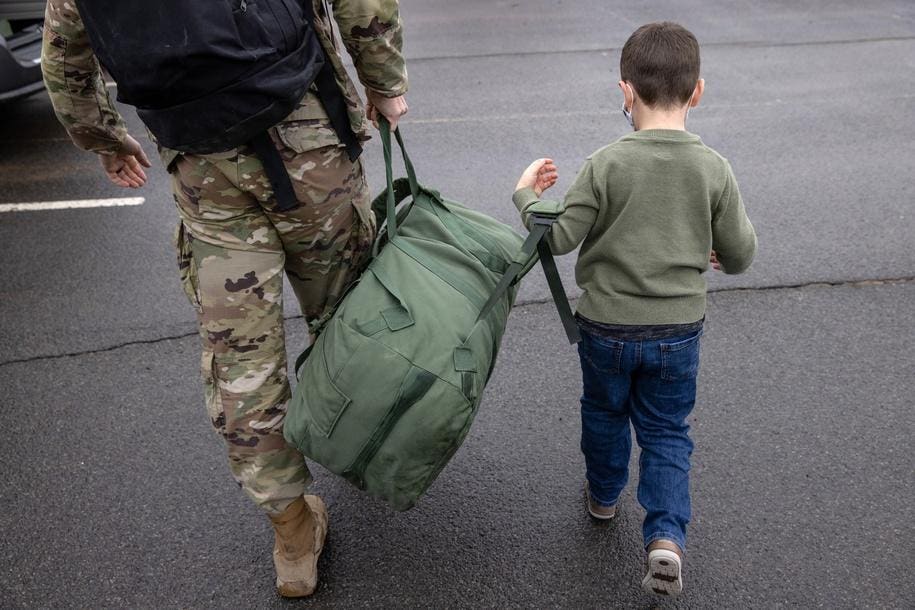In recent months food prices around the globe have continued to climb, making it difficult for millions of families to afford nutritious meals. And while many in the United States personally understand lack of food, it may come as a shock to learn that those who serve this country, U.S. military families and veterans, have faced food insecurity at almost double the rate of the national average for decades. In fact, per the U.S. Census and a Texas Public Radio report 20% of active-duty respondents to a survey in 2021 say they experienced food insecurity, and more than 10% experienced hunger.
Further, according to the U.S. Department of Defense, in 2020 nearly a quarter (24%) of active-duty service members were food insecure. And, as far back as 2014-2015, almost half of students in the U.S. Department of Defense schools were eligible for reduced-price meals.
We often hear leaders from government and industry extol the virtues of and give thanks to the men and women who serve. But what we don’t often hear is the harsh reality of the lack of health resources extended to those who put their lives on the line and sacrifice for country.
Not only is it a travesty that highlights low pay and lack of resources, but food security among military families and veterans is a national security concern. According to CSIS, “It multiplies stress on active-duty personnel, diminishes well-being among service members and their children – who are more likely to serve in the military as adults – and may hinder recruitment for the armed services.”
So what factors contribute to the alarming and unacceptable rates of food insecurity amongst our armed forces? There are several overlapping issues at play, many, or all, of which could be addressed by elected officials.
1. Low Pay and Financial Challenges: While active-duty military personnel receive a salary, it may not always be sufficient to cover all expenses, especially if they have dependents. Unemployment rates among military spouses also remains high, in part due to frequent moving and raising a family/running a household with a spouse on duty. Child care costs alone frequently far exceed salaries.
2. Transitory Lifestyle and Transition to Civilian Life: Veterans transitioning to civilian life after their service may face difficulties in finding stable employment. Not to mention a lifestyle that often requires frequent movement and short-term spouse employment and community-building. Transitory lifestyles and transition can lead to financial instability, making it harder to afford adequate food.
3. Physical and Mental Health Issues: Veterans often experience physical and mental health challenges due to their service. Disabilities, injuries and mental health conditions can impact their ability to work and earn a living, thereby affecting their ability to afford food.
4. Access to Services: Some military families and veterans might not be aware of or have access to the various assistance programs and resources available to help alleviate food insecurity. Delays and backlogs in processing information at the state or federal level can also make assistance hard to access during short-term need.
5. Location and Deployment: For active-duty personnel and their families, deployment can disrupt regular routines, making it difficult to access affordable and nutritious food. Military installations might not always be located in areas with easy access to grocery stores or fresh produce. And for those living on or near base, oftentimes local prices far exceed the salary of the service member.
6. Stigma and Pride: There is a reluctance among military personnel and veterans to seek help for food insecurity due to pride, stigma and concerns about appearing weak or dependent. When one is closely tied to the government it might be even harder to ask for assistance. Food security is also an issue that is not frequently discussed amongst ones support system like neighbors and colleagues.
However, it is important to note that there have been initiatives and organizations working hard to address food insecurity within the military and veteran communities. These efforts include food assistance programs, collaborations with local food banks and awareness campaigns to ensure that military personnel and veterans receive the support they need – as well as know they are not alone.
Additionally, the U.S. Senate passed a pared-down version of the Military Family Basic Needs Allowance as part of the Fiscal Year 2022 National Defense Authorization Act (NDAA). This was a step toward closing gaps in the social safety net. Although it’s been argued that the approved version falls far short of providing a long-term solution to this crisis.
For those in immediate need, assistance can be found through the Military Family Advisory Network and local food banks, Blue Star Families, and other local resources. Military.com also keeps a list of resources and government assistance programs for those in need.
Read the full article here










